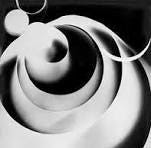norman lebrecht
October 25, 2025
American artist Man Ray, born Emmanuel Radnitzky, was a visionary known for his radical experiments that pushed the limits of photography, painting, sculpture, and film.
In the winter of 1921, he pioneered the rayograph, a new twist on a technique used to make photographs without a camera. By placing objects on or near a sheet of light-sensitive paper, which he exposed to light and developed, Man Ray turned recognizable subjects into wonderfully mysterious compositions. Introduced in the period between Dada and Surrealism, the rayographs’ transformative, magical qualities led the poet Tristan Tzara to describe them as capturing the moments “when objects dream.”
This exhibition at the Met is the first to situate this signature accomplishment in relation to Man Ray’s larger body of work of the 1910s and 1920s. Drawing from the collections of The Met and more than 50 American and international lenders, the exhibition features approximately 60 rayographs and 100 paintings, objects, prints, drawings, films, and photographs—including some of the artist’s most famous works—to highlight the central role of the rayograph in Man Ray’s boundary-breaking practice.
“Before my eyes an image began to form, not quite a simple silhouette of the objects as in a straight photograph, but distorted and refracted … In the morning I examined the results, pinning a couple of the Rayographs—as I decided to call them—on the wall. They looked startlingly new and mysterious.” — Man Ray
Here is a virtual tour of Man Ray: When Objects Dream by Curators Stephanie D’Alessandro and Stephen Pinson.

